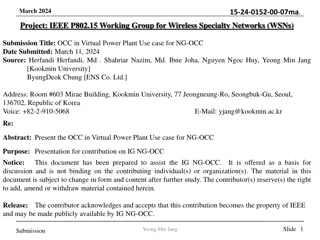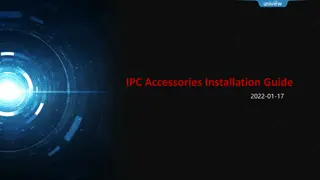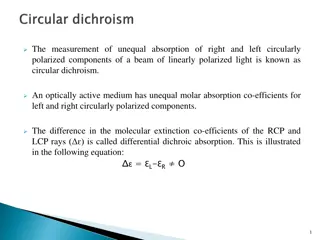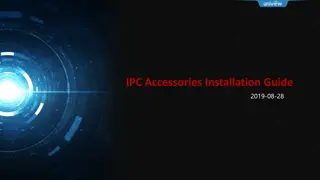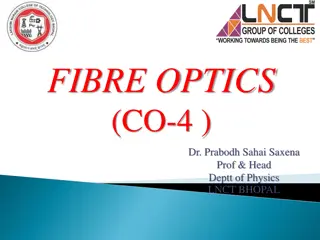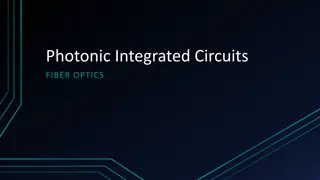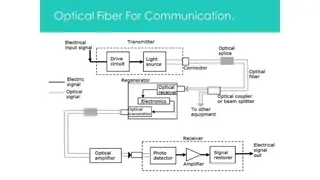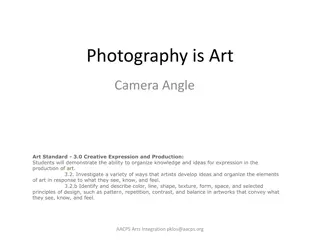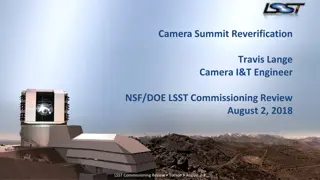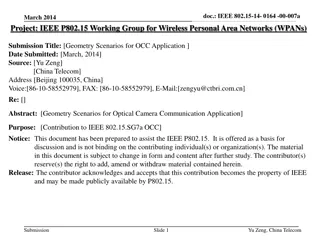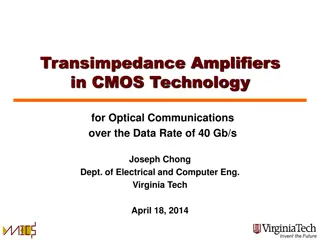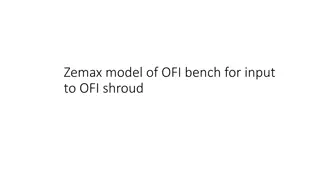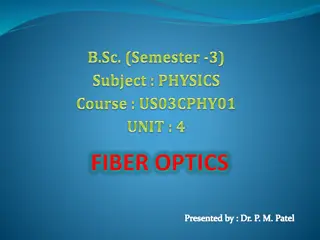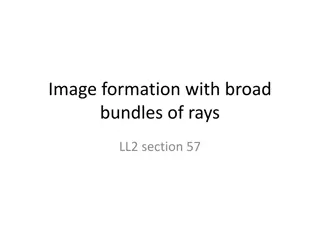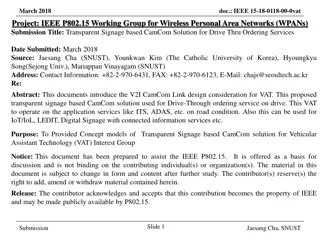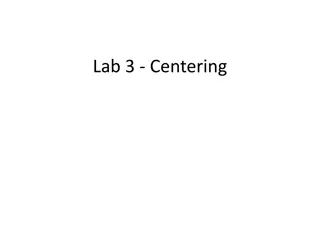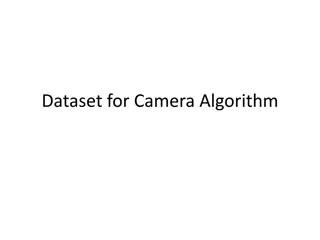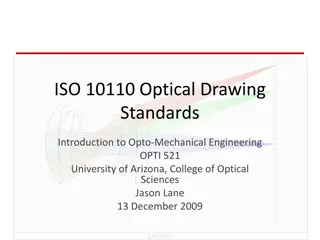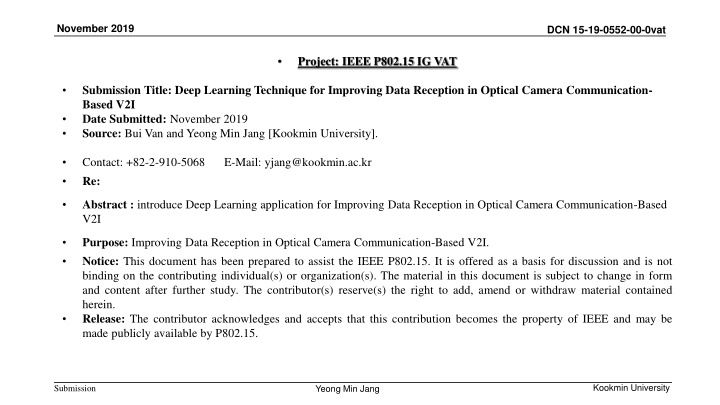
Improving Data Reception with Deep Learning in Optical Camera Communication
Explore how deep learning techniques enhance data reception in optical camera communication for vehicle-to-infrastructure (V2I) applications. The proposed approach leverages neural networks for traffic light recognition and ROI detection, addressing challenges in Optical Vehicular Communication systems. By using innovative methods like You Only Look Once (YOLO), this research aims to optimize data retrieval efficiency in V2I environments.
Download Presentation

Please find below an Image/Link to download the presentation.
The content on the website is provided AS IS for your information and personal use only. It may not be sold, licensed, or shared on other websites without obtaining consent from the author. If you encounter any issues during the download, it is possible that the publisher has removed the file from their server.
You are allowed to download the files provided on this website for personal or commercial use, subject to the condition that they are used lawfully. All files are the property of their respective owners.
The content on the website is provided AS IS for your information and personal use only. It may not be sold, licensed, or shared on other websites without obtaining consent from the author.
E N D
Presentation Transcript
November 2019 DCN 15-19-0552-00-0vat Project: IEEE P802.15 IG VAT Submission Title: Deep Learning Technique for Improving Data Reception in Optical Camera Communication- Based V2I Date Submitted: November 2019 Source: Bui Van and Yeong Min Jang [Kookmin University]. Contact: +82-2-910-5068 Re: E-Mail: yjang@kookmin.ac.kr Abstract : introduce Deep Learning application for Improving Data Reception in Optical Camera Communication-Based V2I Purpose: Improving Data Reception in Optical Camera Communication-Based V2I. Notice: This document has been prepared to assist the IEEE P802.15. It is offered as a basis for discussion and is not binding on the contributing individual(s) or organization(s). The material in this document is subject to change in form and content after further study. The contributor(s) reserve(s) the right to add, amend or withdraw material contained herein. Release: The contributor acknowledges and accepts that this contribution becomes the property of IEEE and may be made publicly available by P802.15. Kookmin University Submission Yeong Min Jang
November 2019 DCN 15-19-0552-00-0vat Improving Data Reception in Optical Camera Communication-Based V2I using Neural Network Technique Submission Yeong Min Jang Kookmin University
November 2019 DCN 15-19-0552-00-0vat Challenges in Optical Vehicular Communication system Since LEDs and cameras are already widely used on roadsides and vehicles, it is easy to apply OCC to vehicle-infrastructure communication (V2I) to exchange traffic information. Deep traffic light recognition (DeepTLR) for traffic light recognition based on a ConvNet has been addressed in [2], that is two heuristic traffic light detection methods to a state-of-the-art learning-based detector relying on aggregated channel features were compared. A scheme for improving data reception in OCC-based V2I using deep learning approach is proposed, as the detection of ROI is carried out by a trained neural network, and OCC data can be retrieved from consecutive image frames. There are two traffic light detection in OCC-based V2I: OCC system and Deep-learning based ROI detection. Submission Yeong Min Jang Kookmin University
November 2019 DCN 15-19-0552-00-0vat OCC system for V2I In the V2I environment, the LED light source of the traffic light transmits the road information data using the visible light modulation method. The intensity variation of the optical signal contains digital bit sequences and can be detected via camera sensors. After that, the traffic light is displayed on the image pixels, and successive image frames are accumulated to retrieve the data packet. To detect ROI in the conventional OCC method, the image difference using the On-Off pattern of the visible light modulation signal is used. The differential image becomes ambiguous when captured images are blurred due to the vehicle movement, and that eventually lowers the data packet reception rate, yet reliable performance cannot be guaranteed. Submission Yeong Min Jang Kookmin University
November 2019 DCN 15-19-0552-00-0vat Deep learning-based ROI detection As deep neural networks is an appropriate method for realizing a robust ROI detection for OCC- based V2I. The learning process of the traffic light image was done through You Only Look Once (YOLO) technique , which supports high frames per second (FPS) and accuracy through fast preprocessing speed. The proposed deep learning model was composed of 22 Convolution Layer and 5 Max Pooling Layer by adding 3 more layers to the basic network structure of YOLO Version 3. The training data includes 1600 images of 640x480 pixels obtained from the existing datasets for traffic light detection, and 1400 image data sets of 320x240 pixels obtained from the actual experiment were used. The pixel distribution inside the box to distinguish the On-Off data bit. The use of YOLO in OCC systems can be a viable solution for V2I applications due to its reliability, realtime process, and capability to obtain for both small and large objects. Submission Yeong Min Jang Kookmin University
November 2019 DCN 15-19-0552-00-0vat Conclusion Deep learning-based approach for improving data packet reception of OCC-based V2I was proposed. In order to reliably receive consecutive OCC data sent from traffic lights on the roadside, traffic lights should be recognized as ROIs at each frame and continuously detected. YOLO deep learning model are adapted for the ROI detection in the receiving process. Submission Yeong Min Jang Kookmin University
November 2019 DCN 15-19-0552-00-0vat References S. H. Lee, S.-Y. Jung, and J. K. Kwon, Modulation and coding for dimmable visible light communication, IEEE Communications Magazine, vol. 53, no. 2, pp. 136 143, Feb. 2015. Dong Nyeok Choi, Sung Yooun Jin and Juhee Lee, "Deep learning technique for improving data reception in optical camera communication-based V2I" 2019 28th International Conference on Computer Communication and Networks (ICCCN), Spain, 2019. Submission Yeong Min Jang Kookmin University

